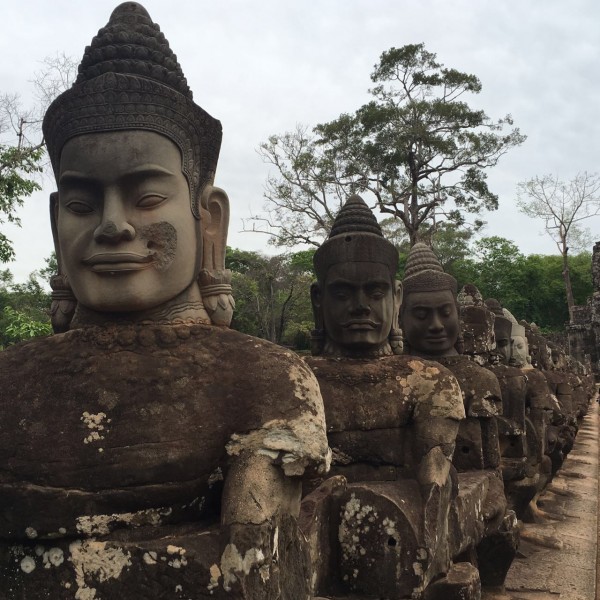Not a member yet? Sign Up!
Info
Please use real email address to activate your registration
What’s dinner like in what was once the largest preindustrial city inhabited by one million people?
---------------------
Siem Reap in Cambodia is the gateway to Angkor Archaeological Park, an area of 400km2 that house the ruins of the Khmer Empire from the 9th to the 15th century. With two million visitors a year, culinary ventures in Siem Reap, population 175,000, thrive to cater all budgets and preferences. Visitors spend mornings exploring hundreds of temples while evenings are designed for dinners to relaxations.

Although not as famous as its neighboring countries of Vietman and Thailand, Cambodian food is gaining popularity. Meals often includes noodles, soups, grills, stir-fried, curries, vegetables, fruits, and rice as the staple food. Cambodians use spice paste made from cloves, cinnamon, star anise, nutmeg, cardamom, ginger and turmeric. Add galangal, garlic, shallots, lemongrass, cilantro, and kaffir lime leaves for kroeung, a distinctive spice blend. Other ingredients that give Cambodian cuisines their flavor are prahok, fermented fish paste, and kapi, fermented prawn paste.
In Siem Reap for Crafting Culinary Stories: An Intensive Workshop on Food Photography and Writing, we were fortunate to dine in eateries run by culinary figures who preserve Cambodian food cultures.
Mie Café
Owner-Chef Pola Siv, a gentle man who turned his trauma of the Cambodian civil war into a successful business, runs Mie Café at 85 Phum Treng Khum Slorgram. “My aim in life during the war was only food and peace,” he said on a tuk-tuk ride from an organic farm near Siem Reap. Without a formal culinary education, he climbed his way up from being a dishwasher to studying in a cooking academy in Switzerland.
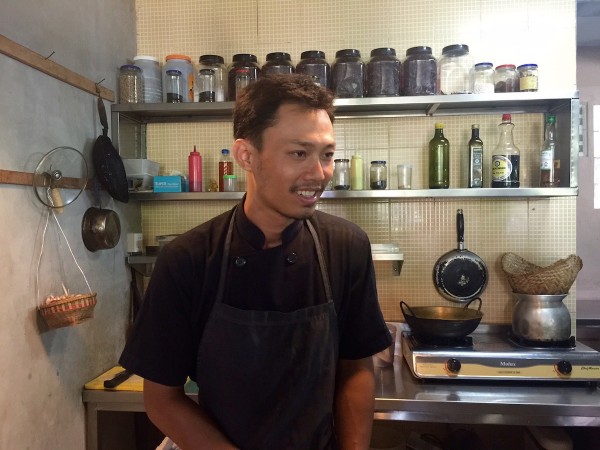

Pola worked at a Swiss Michelin starred restaurant before eventually returning to Cambodia to be his own master. He opened a now very popular Mie Café, his creative ground to create fusion dishes, a blend of Western and traditional Khmer cuisine. Mie Café offers dishes like scallop seaweed salad with palm fruit, vegetable and herbs consume with Sanday fish fillet marinated with red ant powder, and rib eye beef lok lak with wild mushroom.
Banlle
Banlle Vegetarian Restaurant at Road 26, Phum Wat Bo promotes its service by saying “The keeping of a vegetarian diet is a gift which we give to ourselves.” A modest organic garden site full of vegetables and herbs for restaurant consumption is part of the “gift.”
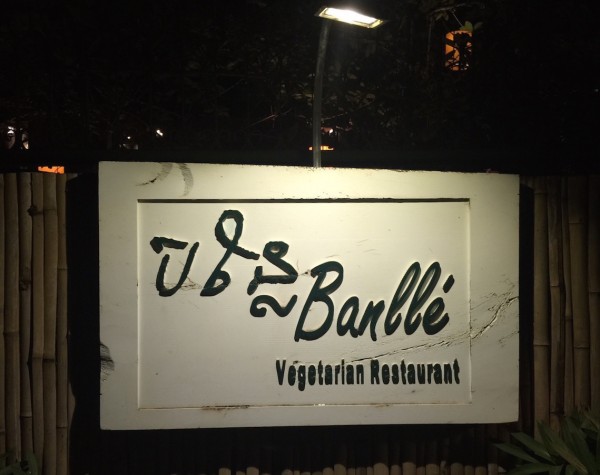
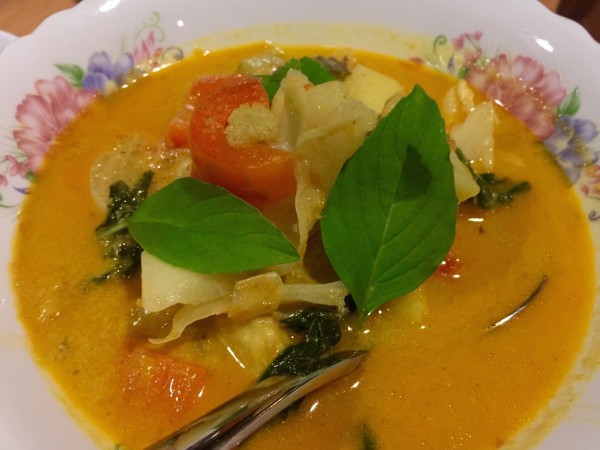
Funded by Hauts-de-Seine, a French organization, the garden is part of the diversification of peri-urban agriculture and malnutrition alleviation in Siem Reap. We had a five-course dinner in the garden setting that began with fresh vegetable wrap made from rice paper wrap with avocado, bean sprout, carrot, scallion, herbs, cucumber, potato with soybean dressing and ended with palm fruit dessert with coconut sorbet. My favorite was the warm house salad with vermicelli noodle and vegetable curry that consists of homemade curry paste, coconut cream and vegetables.
Home-cooked Dinner
Our introduction to Khmer Cuisine began on the day we arrived at Siem Reap when Scottish Chef Steven Halcrow and American writer Lina Goldberg invited us for a home-cooked dinner at their house. Fluent in Khmer, they founded Siem Reap Food Tours, guided morning and evening expeditions, that help visitors explore Cambodian life and culture and the nuances of its cuisine.
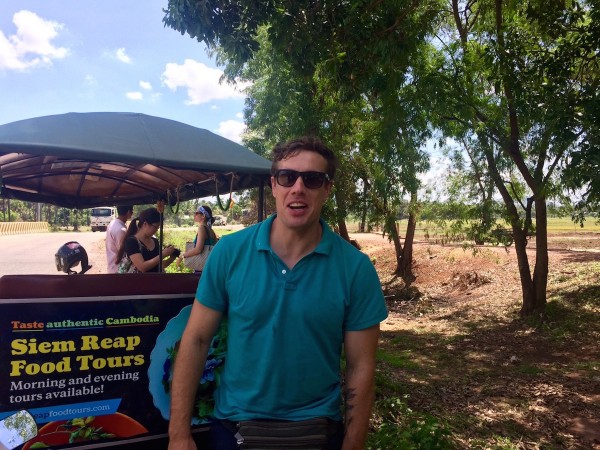
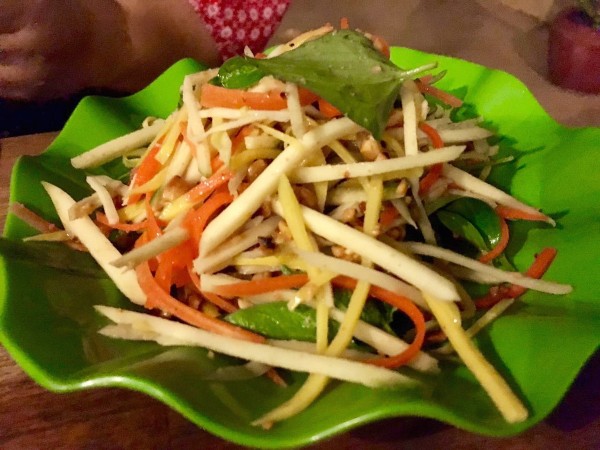
As there are pescatarians and a vegan in our group, Steven carefully introduced what ingredients are in each dish of our dinner. Most memorable are boiled vegetables with eggplant dip, mango salad, and mushroom and tofu curry. Steven who worked at a Michelin starred restaurant in Scotland before moving to Cambodia and Lina, the author of Move to Cambodia: A guide to living and working in the Kingdom of Wonder, guided us to local farms and markets showing their expertise and love of Cambodian food.
Cuisine Wat Damnak
Cuisine Wat Damnak may be the most famous restaurant in Siem Reap as it was recently named one of Asia’s 50 Best Restaurants. This was not our first visit to this place in Wat Damnak village, Sala Kamreuk Commune as back in 2013 we wrote a blog post Cuisine Wat Damnak – In Praise of Cambodian Food. “My idea is to cook Cambodian food using local ingredients in a European style,” Owner-Chef Joannès Rivière explained passionately when we met. “I now worked with some organizations to supply vegetables, but I go to the market to get fish, chicken and meat,” he continued.
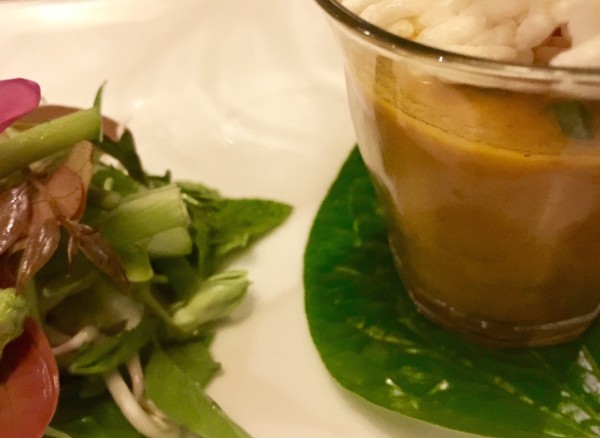
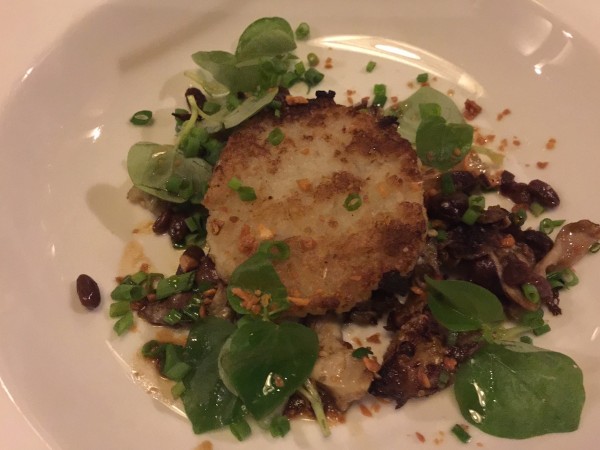
Over the years Joannès is consistent in offering two tasting menus that change regularly. He also has a vegetarian tasting menu that I enjoyed, especially the fresh rice flake pancake with fermented soybean, stir-fried mushroom shiny cresson. Dessert of coconut caramel baguette with banana and soy pandan mousse was inspired by Cambodian school children favorite.
MDS Restaurant
MDS stands for Muscovy Duck Soup, a local restaurant that only serves duck soup cooked on the table with options to add vegetables grown in MDS’s garden such as local herbs, mushrooms, baby corn, and taro. Noodles, fertilized duck egg and a tin of milk is available to make the soup rich and creamy. Located behind Kanta Bopha hospital, MDS Restaurant is a fine example of an environmental friendly diner as Sela Chham its owner reduce, reuse, and recycle all waste generated by the restaurant.
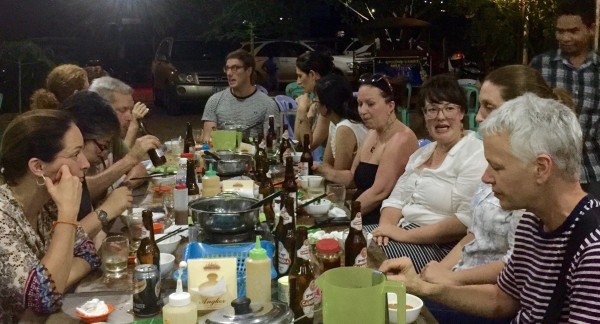
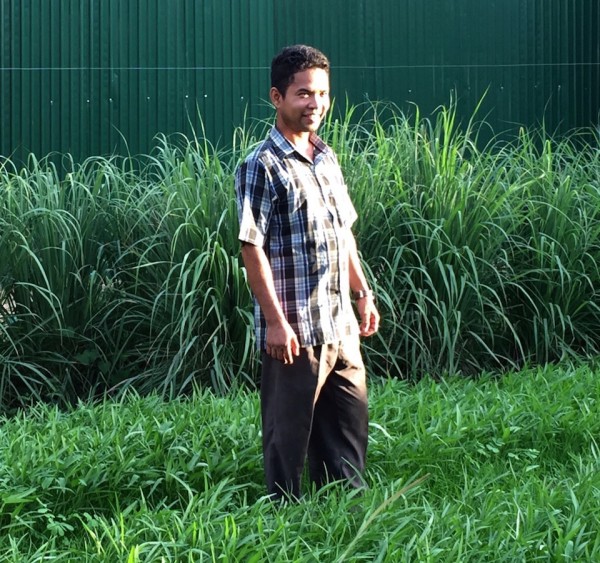
Sela believes that running business in a socially and environmentally conscious way will lead to long-term business success. MDS is so popular among Cambodians that it cooked 700 kilos of ducks per month. Sela who holds a Bachelor degree in Tourism and Hospitality and an MBA is initiating projects where farmers will be trained and loaned young ducks, food, and vegetable seeds. Neither interest nor collateral is expected as the credit will be repaid by deducting the costs from the price of the ducks and vegetables sold to MDS.
--------------------
Dinner in Seam Reap, once the largest preindustrial city in the world, is an array of selections with delicacies from all over the world. The ancient Khmer Empires relied on fish and rice as their food resources and they are still served in modern Siem Reap cuisine, In this city, culinary champions work tirelessly to preserve the Cambodian subtleties that make its food distinct.
